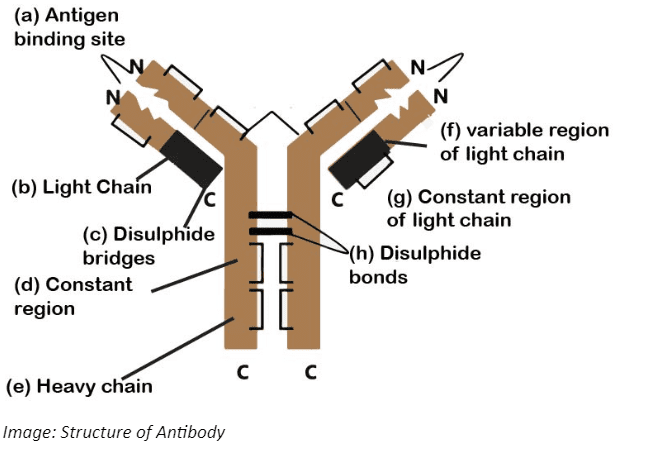Class 12 Biology Chapter 7 Human Health and Diseases NCERT Solutions- FREE PDF Download






Related Chapters























FAQs on NCERT Solutions for Class 12 Biology Chapter 7 Human Health and Diseases
1. What are the effects of overdose usage of LSD, amphetamines, and barbiturates in humans from human health and diseases class 12 exercise?
LSD, barbiturates, or amphetamines are used to treat mental illness. However, the excessive use of these medicines leads to a severe impact on the body. A person may have an appetite or weight fluctuations issues, social adjustment problems, depression, aggressive behaviour, or fatigue. The person may also go through anxiety, sweating, and nausea, shakiness, or loss of mind control. Due to extreme use of these dosages a person may sink to coma and even die due to cerebral hemorrhage respiratory failure or heart failure.
2. State the importance of vaccination discussed in human health and diseases class 12 NCERT.
Vaccines are medications that prepare the body to battle a disease without getting endangered by the disease. It is a substance that incites a person’s immune system to build immunity for a specific disease, defending the person from that disease. Vaccines are generally offered through needle injections, but can also be administered by spraying into the nose or mouth. The vaccine is based on the principle of ‘memory’ of the immune system. In vaccination, a form of antigenic proteins is injected into the body. These antigens produce a primary immune response by producing antibodies with memory B-cells and T-cells.
3. What is the difference between infectious and non-infectious diseases?
Infectious diseases are caused by pathogenic microorganisms like bacteria, viruses, fungi, and protozoa, whereas non-infectious diseases are caused by factors like genetic abnormalities, lifestyle, environment, and nutrition.
4. What is HIV/AIDS from human health and diseases NCERT?
The Human Immunodeficiency Virus (HIV) is a virus that targets the immune system, the body's natural defense against infections and diseases. The virus predominantly targets CD4+ T cells, a kind of white blood cell that is essential to the immune system. The virus gradually destroys these cells as it replicates, resulting in a compromised immune system.
AIDS (Acquired Immunodeficiency Syndrome) is a disease that occurs when the immune system is severely compromised by HIV, leaving the body vulnerable to a variety of infections and disorders. People living with AIDS frequently develop life-threatening illnesses such as pneumonia, tuberculosis, and certain types of cancer. If not treated appropriately, AIDS can be lethal.
HIV is spread mostly through contact with infected bodily fluids such as blood, sperm, vaginal secretions, and breast milk. The virus can be transmitted by unprotected sexual contact, needle sharing, mother-to-child transmission during pregnancy, childbirth, or breastfeeding, and, in rare cases, transfusion of contaminated blood. Although there is no cure for HIV/AIDS, antiretroviral therapy (ART) can help manage the virus and prevent the disease from progressing to AIDS.
5. What is the difference between acute and chronic diseases?
Acute diseases are those that develop suddenly and last for a short period, usually days or weeks. They are often caused by infections and injuries, and the symptoms can be severe. Examples of acute diseases include influenza, appendicitis, and pneumonia. Acute diseases can often be treated effectively with medications and other medical interventions, and the patient typically recovers within a few weeks.
Chronic diseases, on the other hand, develop slowly and persist for a long time, usually for months or years. They are often caused by genetic or lifestyle factors such as poor diet, lack of exercise, or smoking. Chronic diseases can cause irreversible damage to the body's organs and tissues, and the symptoms can be mild or severe. Examples of chronic diseases include diabetes, arthritis, and heart disease. While there may be no cure for chronic diseases, they can be managed through lifestyle changes, medications, and other medical interventions.
6. What do you mean by human health and diseases NCERT PDF?
Human Health and Diseases class 12 PDF comprises all the questions and answers related to the 12th biology 7th chapter exercise, which helps students solve and clear their doubts about this chapter.
7. Why is the Human Health and Diseases Class 12 PDF important?
The Human Health and Diseases NCERT PDF is designed to give clear and effective answers for students preparing for their board exams.
8. According to class 12 Biology Chapter 7, how do we maintain our health?
Here are some points:
Eat a balanced diet.
Limit processed foods.
Maintain a healthy weight.
Get enough sleep.
Manage stress.
Schedule regular checkups.
Students can learn more about health and related concerns for human health and diseases in class 12 exercise.
9. Where can we find human health and diseases NCERT solutions?
Vedantu provides all the solutions related to Chapter 7 and access to human health and diseases NCERT PDF for all the students navigating through the questions and doubts related to Class 12 Biology Chapter 7.





